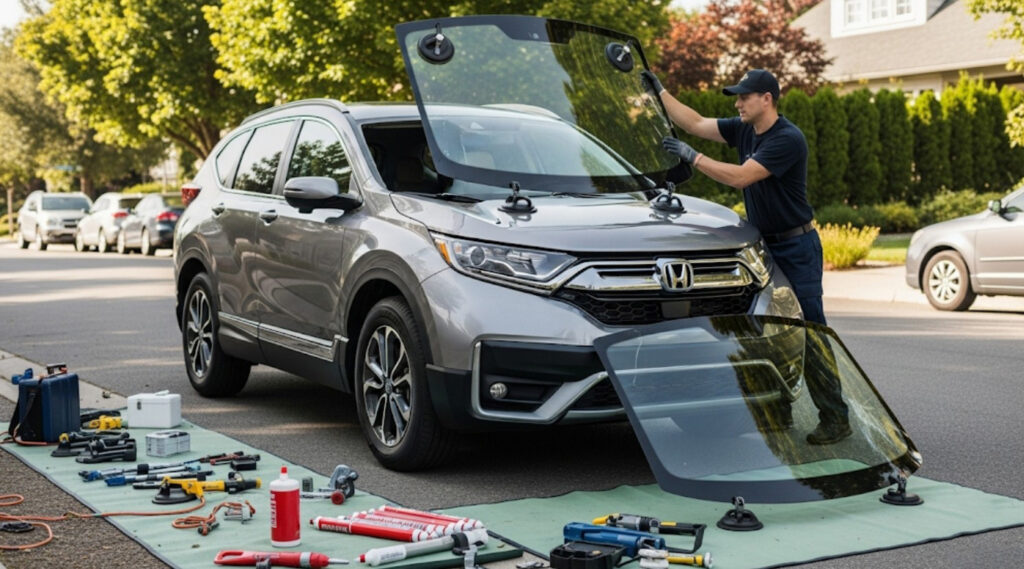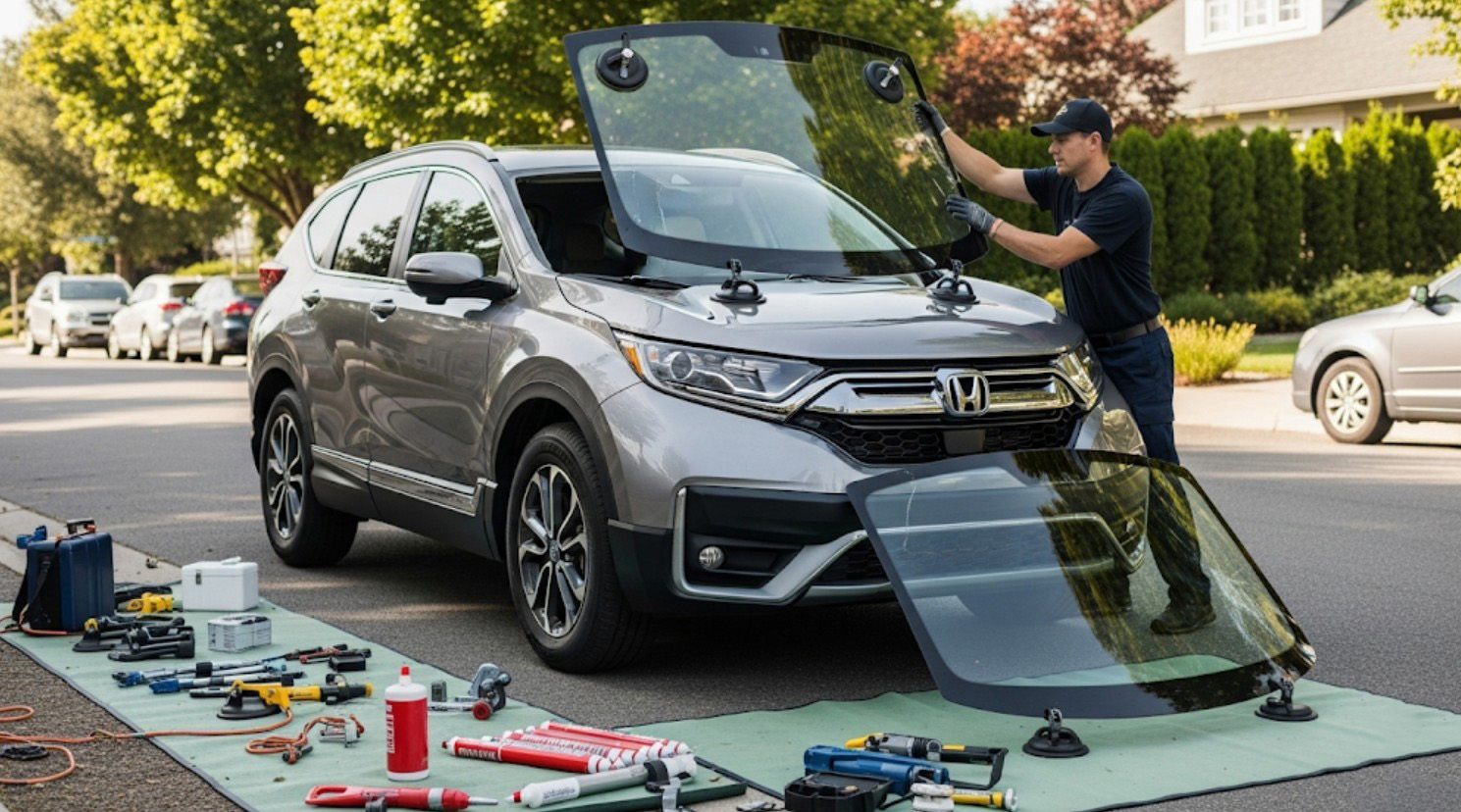Windshield replacement used to be a relatively straightforward process. Remove the old glass, install the new one, seal it properly, and you were good to go. But with today’s vehicles packed with advanced technology, the windshield plays a much larger role than simply blocking wind and debris. In fact, your windshield is now an integral part of your vehicle’s safety systems.
Below, we’ll break down why replacing a windshield on a modern car requires extra care, attention to technology, and specialized expertise.
Modern Windshield Technology
In older cars, windshields were primarily a piece of laminated safety glass. Modern vehicles, however, often have:
- Acoustic glass layers to reduce road noise.
- Infrared coatings to keep interiors cooler.
- Heated elements to prevent fogging and ice buildup.
- Heads-Up Display (HUD) compatibility, requiring specific optical clarity.
These features mean your replacement glass has to be the correct match for your car. Installing a generic windshield could compromise comfort, visibility, and even safety.
Sensors, Cameras, and ADAS Challenges
One of the biggest changes in modern vehicles is the integration of Advanced Driver Assistance Systems (ADAS). Many cars now have cameras and sensors mounted directly to the windshield, supporting features like:
- Lane departure warning
- Adaptive cruise control
- Forward collision alerts
- Automatic emergency braking
When the windshield is replaced, these sensors and cameras can be disturbed or misaligned. Even a fraction of a degree off can mean the difference between your ADAS working properly—or failing when you need it most.
Unique Challenges with Electric Vehicle Windshields
Electric vehicles (EVs) add an extra layer of complexity to windshield replacement. Because EVs prioritize aerodynamics and efficiency, their windshields are often uniquely shaped and feature advanced coatings to help with cabin cooling and battery range.
Additionally, EVs rely heavily on driver-assist and safety cameras, meaning recalibration after a replacement is almost always necessary. Specialized tools, OEM-approved glass, and trained technicians are often required to ensure everything works as intended.
The Importance of ADAS Recalibration
After a windshield replacement, ADAS recalibration is not optional. Without recalibration, the cameras and sensors may provide incorrect data, which can:
- Trigger false alarms.
- Fail to detect hazards.
- Reduce the effectiveness of automatic safety features.
Certified auto glass shops use specialized calibration equipment to realign your car’s safety systems to factory specifications. This step ensures your vehicle is just as safe as it was before the glass was damaged.
Conclusion
Replacing a windshield today is about much more than swapping glass. From advanced materials to safety-critical sensors and cameras, the job requires expertise, the right equipment, and attention to detail.
If you’re facing a windshield replacement, it’s smart to compare options and choose a shop with the right experience. At Glass.net, you can use our free quote tool to compare prices from up to three trusted local shops in your area. That way, you’ll get the right service at the right price, without compromising safety.
Click Here for your Free Quote

To read more, visit blog.glass.net

